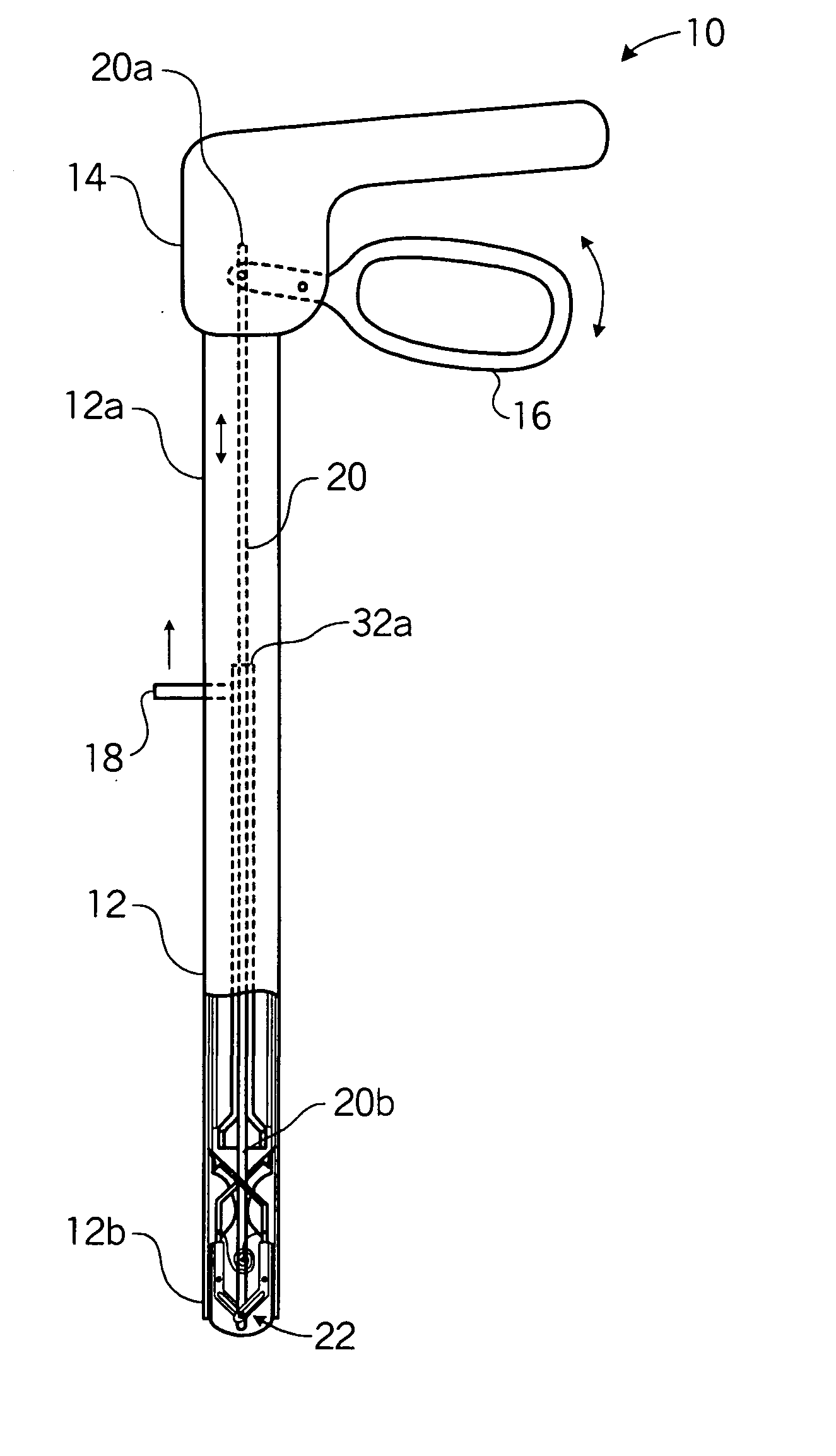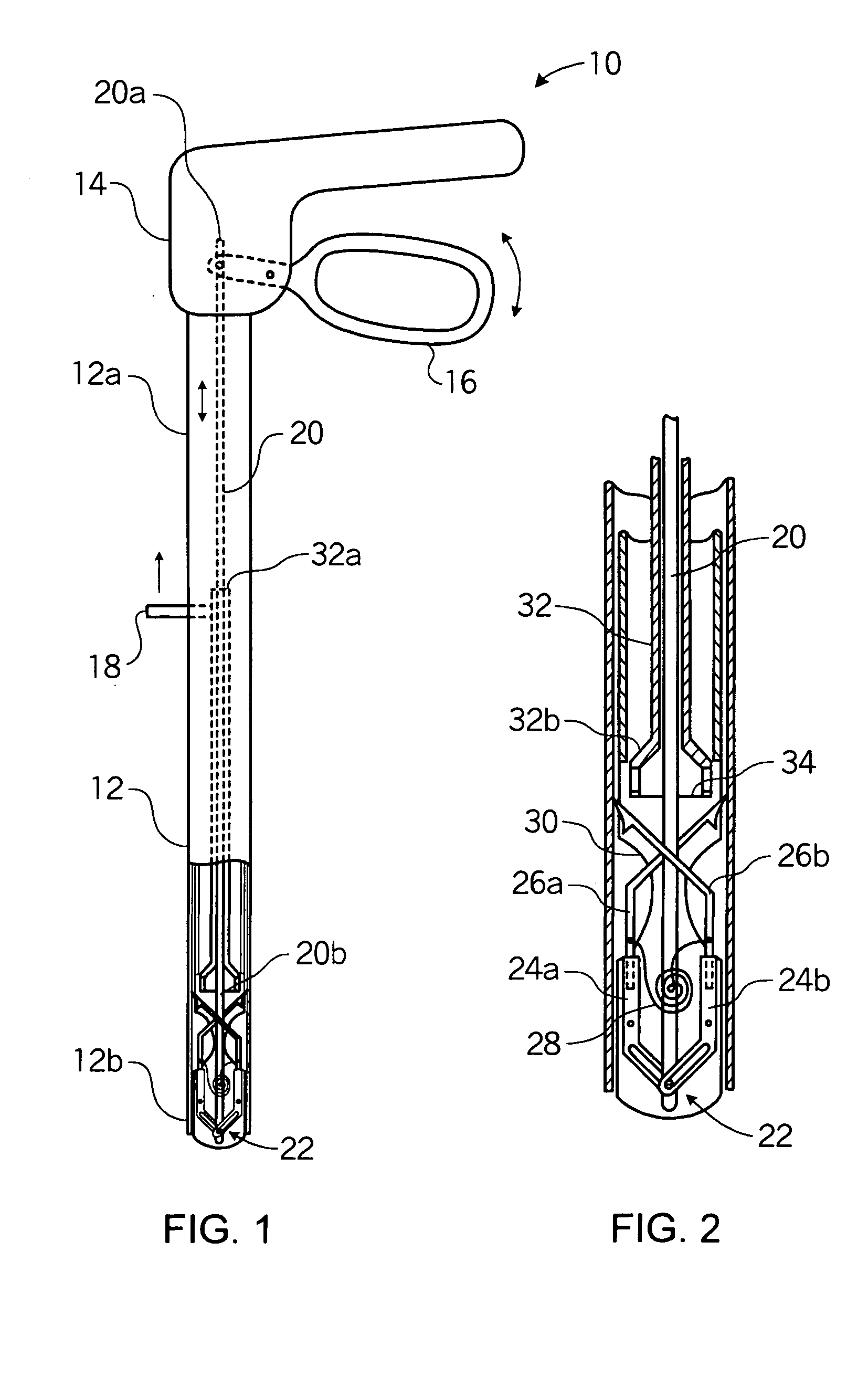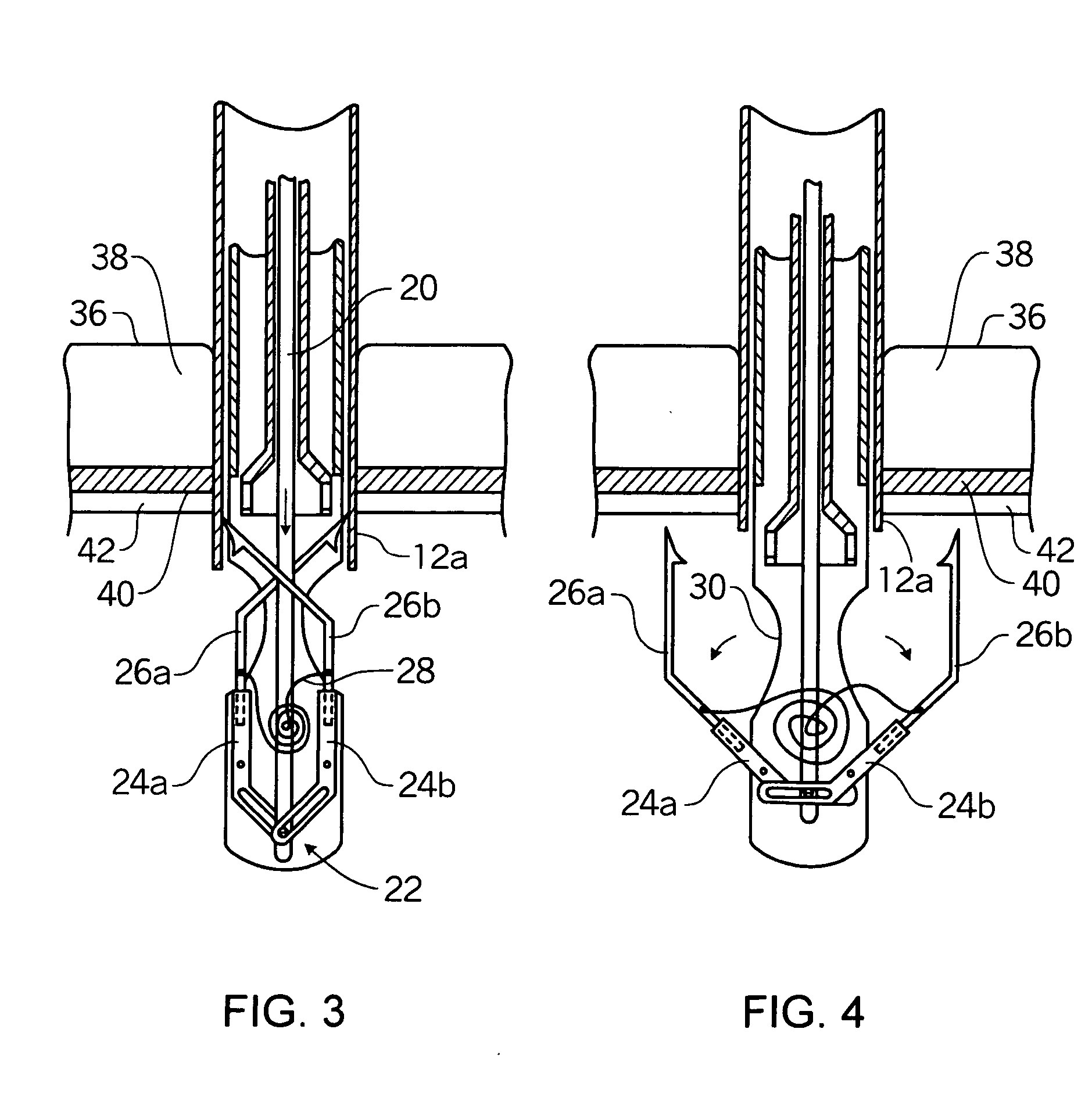Puncture site closure device
a closure device and site technology, applied in the field of laparoscopic, endoscopic, thoracic surgery, can solve the problems of increasing the workload of surgeons, affecting the closure effect, so as to facilitate the ability of the device to assume the third configuration, facilitate the ability of the needle/suture complex, and facilitate the effect of the closur
- Summary
- Abstract
- Description
- Claims
- Application Information
AI Technical Summary
Benefits of technology
Problems solved by technology
Method used
Image
Examples
Embodiment Construction
[0026] The detailed description set forth below is intended as a description of the presently preferred embodiment of the invention, and is not intended to represent the only form in which the present invention may be constructed or utilized. The description sets forth the functions and sequences of steps for constructing and operating the invention. It is to be understood, however, that the same or equivalent functions and sequences may be accomplished by different embodiments and that they are also intended to be encompassed within the scope of the invention.
[0027] More specifically, the present invention is directed to a device that is operative to fashion a secure closure or suture of incisions or punctures, in organs, vasculature, and or tissues surrounding a cavity of the body. According to a preferred embodiment, the device comprises an elongate cannula or trocar or other hollow housing member having proximal and distal ends, the latter being configured to be inserted within...
PUM
 Login to View More
Login to View More Abstract
Description
Claims
Application Information
 Login to View More
Login to View More - R&D
- Intellectual Property
- Life Sciences
- Materials
- Tech Scout
- Unparalleled Data Quality
- Higher Quality Content
- 60% Fewer Hallucinations
Browse by: Latest US Patents, China's latest patents, Technical Efficacy Thesaurus, Application Domain, Technology Topic, Popular Technical Reports.
© 2025 PatSnap. All rights reserved.Legal|Privacy policy|Modern Slavery Act Transparency Statement|Sitemap|About US| Contact US: help@patsnap.com



